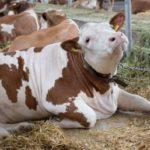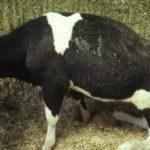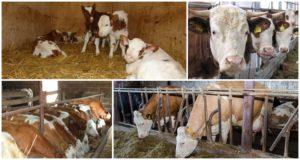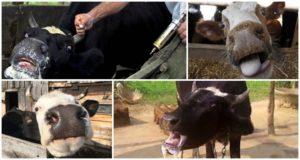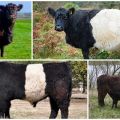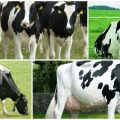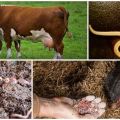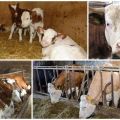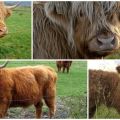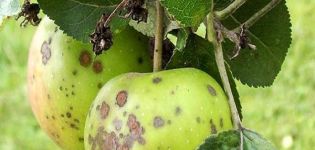Symptoms and treatment of postpartum paresis in a cow, what to do for prevention
Poor housing conditions and improper feeding can lead to the development of certain diseases in cows. Among them are postpartum paresis, which is also called a coma of dairy cows. This is a paralytic pathology, which is accompanied by paresis of the digestive system and limbs. In the absence of timely treatment for postpartum paresis, a cow has serious consequences.
General information about the disease
Postpartum paresis is a serious illness of cows, sheep, goats and, less often, pigs, which manifests itself in paralysis of the pharynx, tongue, intestines and legs, ends with coma and death. The disease makes itself felt immediately after childbirth, and in very rare cases - after a week or a month. In some animals, paralysis is recorded after every birth.
If assistance is not provided or if treatment is not timely, a coma of dairy cows is fatal after 1-3 days (sometimes a little more). Therefore, therapy must be started in the first two days after the onset of the disease. The prognosis in such cases is almost always favorable - on the second or third day, the symptoms of the disease disappear.
Pathology develops as a result of metabolic disorders, the main of which is an imbalance of calcium and magnesium in the blood. The body of a pregnant cow loses some of the substance in favor of the fetus. During lactation, this problem only gets worse. A decrease in calcium levels, in turn, leads to inhibition of the central nervous system. Strong pain during childbirth also contributes to this.
Causes of paresis in cows
Postpartum paresis in cattle is caused by the following factors:
- Unbalanced diet of a cow, namely a lack of phosphorus, calcium, vitamin D.
- Excess protein.
- An imbalance of calcium and magnesium in the cow's body.
- Deviations in the work of the endocrine system.
- Lack of physical activity.
- Long stay of the cow in a cold room.
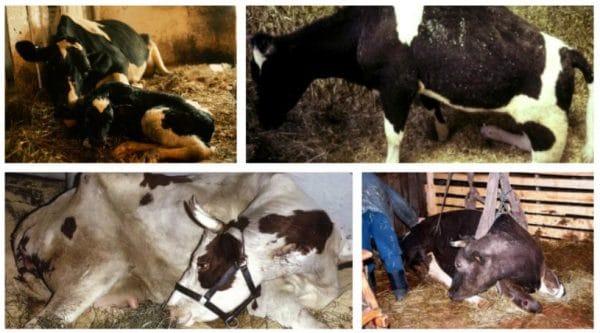
The exact causes of the pathology cannot be established. These factors can contribute to the onset of the disease, but are not its immediate causes.
Based on the results of many years of observations, it was possible to identify animals that are at risk:
- well-fed cows whose diet includes a large amount of protein and concentrates;
- cows, whose age is 5-8 years;
- cows with high productivity rates.
Symptoms of pathology
The first signs of a mild disease are as follows:
- refusal to eat;
- passive behavior;
- depressed or agitated state;
- instability when moving;
- lack of sensitivity to pain;
- tremor;
- the appearance of a rash on the udder;
- decrease in body temperature.
In the future, the cow cannot stand up, since her legs gave up due to weakness. One of the main signs of paresis is the special position in which the cow's body is located: the head is turned to one side (or lies on the chest), the neck is bent, the limbs are bent under the stomach. The rest of the symptoms are as follows:
- the cow sticks out its tongue, profuse salivation occurs;
- the burenka stops urinating and defecating;
- impaired swallowing function;
- decreased breathing rate, hoarseness;
- a decrease in the amount or complete absence of milk;
- tympany;
- if the disease occurs during labor, the calf's exit slows down (the muscles of the uterus stop contracting).
What to do, how to treat postpartum paresis in cattle
There are several ways to help a sick animal. The main methods of therapy are as follows:
- drug treatment;
- special treatment (milk infusion, air blowing).

Drug treatment
Veterinary medicine offers an effective first aid method. A sick animal is injected intravenously with a 10% calcium chloride solution and a 40% glucose solution in an amount of 200-400 milliliters and 200-250 milliliters, respectively. Also, a 20% sodium benzoate solution (15-20 milliliters) is injected under the skin. In addition, it is recommended that an intramuscular injection of a 25% solution of magnesium sulfate in an amount of 40 ml, as well as vitamin D2, be given.
Alternative treatment
There are also alternative treatments:
- Schmidt's method. The problem is solved by pumping air into the udders of sick animals through the teats. For this, an Evers device or a standard car or bicycle pump is used. In the second case, a catheter is required. To prevent infection, a cotton swab is inserted into the hose, which acts as a filter. Before starting therapy, the heifer is laid on its side. Next, the udder is freed from milk, and the teats are disinfected. Then the catheter is connected and air is pumped in. You need to start with the two lower lobes, and after pumping four lobes, the procedure is repeated in the same sequence. Pumping is carried out gradually, until the skin on the udder is smoothed. Like a soccer ball, the udder should make a distinctive sound when tapped. At the end of the procedure, a massage of the tissues near the nipples is performed to prevent air from escaping due to the contraction of the sphincter. If this does not help, the nipples should be tightened with tape or bandage for no more than two hours. Pulling with a thread or rope is strictly prohibited, since such an action will provoke tissue necrosis. Improvement should come within half an hour. If this is not observed, the procedure is repeated after 6-8 hours.
- Infusion of milk. With the help of Janet's syringe and catheter, 600-2000 milliliters of fresh or warmed milk are poured into the udder. The advantage of this method over the previous one is that there is no risk of destruction of the alveoli, the development of tissue necrosis. In addition, recovery is faster, and milk production does not decrease in the future. Milk is introduced into one of the four lobes of the udder. If the procedure does not help, milk is poured into the same portion in the same amount, and the remaining quarters are filled with air.
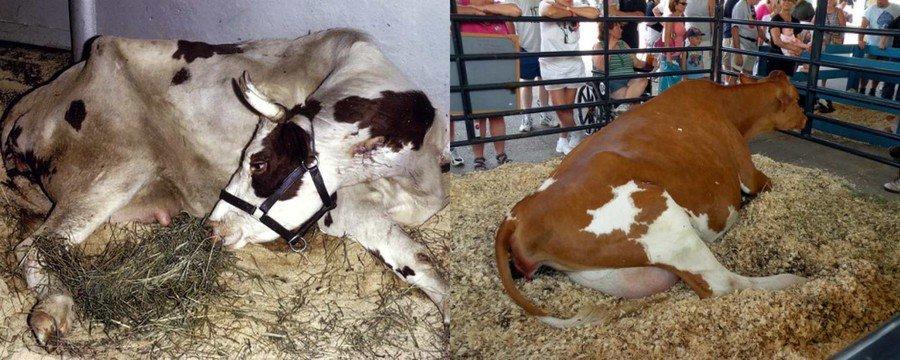
In case of a complicated course of the disease, when the cow is unable to empty the intestines and bladder, the removal of urine and feces is performed using massage.
Possible complications
Lack of proper treatment leads to the development of tympania. Pathology is a swelling of the scar due to severe gas formation. The problem is eliminated by piercing the scar and introducing into its cavity a 5% alcohol solution in a volume of 400 milliliters.
Also, as a result of paresis, acute secondary pneumonia may develop against the background of aspiration with water or food.
Prevention measures
To prevent pathology, a number of preventive measures must be observed, which include:
- Changing the diet of a cow during the prenatal period. Herbs and concentrates are removed from the daily menu.
- You cannot walk the animal in hot weather.
- Elimination of drafts. The room must be arranged so that the cow does not blow through.
- With a decrease in lactation, as well as during dead time, the amount of concentrates in the cow's menu should be limited (maximum - 3 kilograms if there is 8 kilograms of hay in the diet).
- When the week is before delivery, the cow is injected with glucose and vitamin D
- Under optimal weather conditions, the cow should be walked regularly.
- The animal needs to be given mineral supplements.
- You can't overfeed the cow.
- It is recommended to add premixes to feed.
- After calving, the animal is soldered off with a special energy drink.
- Timely vaccination of pregnant cows.
In a word, preventive measures are reduced to observing the rules for keeping and feeding the cow. Postpartum paresis in cows is a dangerous disease that, with delayed treatment or its absence, leads to the death of the animal. Most often, the pathology occurs in older cows, as well as in highly productive dairy cows. Paresis is practically not observed in young individuals. The main factor that determines the development of pathology is improper nutrition and non-observance of the rules for keeping livestock.
